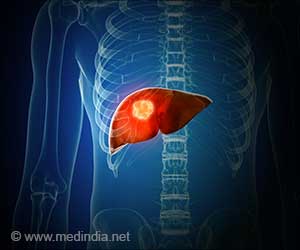Algorithm-driven digital program for disease management can help decrease patients' LDL cholesterol and blood pressure severity, reports a new study.

‘Failure to appropriately treat high cholesterol and high blood pressure remains an ongoing clinical challenge that raises the risk of heart attacks, stroke, and cardiovascular death.
’





Using digital tools, clinicians at Brigham and Women's Hospital in Boston, Massachusetts, initiated and continue to conduct a remote, algorithmically driven, hypercholesterolemia, and hypertension management program.Between January of 2018 and May of 2020, researchers screened 18,810 patients and enrolled 5,000 patients into either the cholesterol program, the hypertension program – or both. Among the 3,939 patients enrolled in the cholesterol program, 35% had established atherosclerotic cardiovascular disease (ASCVD), 25% had diabetes but no ASCVD, and 31% had low-density lipoprotein cholesterol (LDL-C) >190 mg/dL. Doctors, pharmacists, and support specialists helped design these management programs to initiate and adjust the medication doses, also known as titration, to achieve maximum benefits for patients while minimizing clinically important side effects.
"To better control cholesterol and blood pressure, both of which are major cardiovascular risk factors, we need new end-to-end treatment solutions that improve patient identification, data collection, education, and care delivery, including standardizing medication regimens. We are redefining treatment pathways to address persistent gaps in health care, overcome clinical inertia and address the problems of limited access to physicians by expanding remotely-delivered care," says the study's lead author Benjamin M. Scirica, M.D., M.P.H., a cardiologist at Brigham and Women's Hospital and associate professor of medicine at the Harvard School of Medicine, both in Boston.
Using electronic health records and doctor referrals, the program identified people with uncontrolled LDL-C and/or high blood pressure. Patients received digitally connected blood pressure cuffs for use at home, and pharmacists and support staff used the clinical algorithms to initiate and titrate medications at preset intervals until treatment goals were achieved.
Results of the study include:
Advertisement
- An overall LDL-C reduction of 52 mg/dl (42%) occurred in patients who completed the titration phase of the program.
- Significant LDL-C reductions were achieved in patients who met one of four cholesterol-risk categories – established atherosclerotic cardiovascular disease, diabetes, severe hypercholesterolemia (LDL >190 mg/dL), or high-risk primary prevention.
- The average reduction in blood pressure was 14 mmHg systolic and six mmHg diastolic reduction.
- An overall LDL-C reduction of 24 mg/dl (18%) was achieved in all patients enrolled.
"This is an effective and efficient strategy to care for high-risk yet undertreated patients and to optimize guideline-directed therapy. Specialized out-of-office treatment for cholesterol and blood pressure control reduces the need for in-person visits and allows for collaborative decision-making in-patient care. The results of our study provide a model for expanding remote health care delivery to increase access to care, to help reduce health inequities, and to improve health care quality," said Scirica.
Source-Eurekalert












